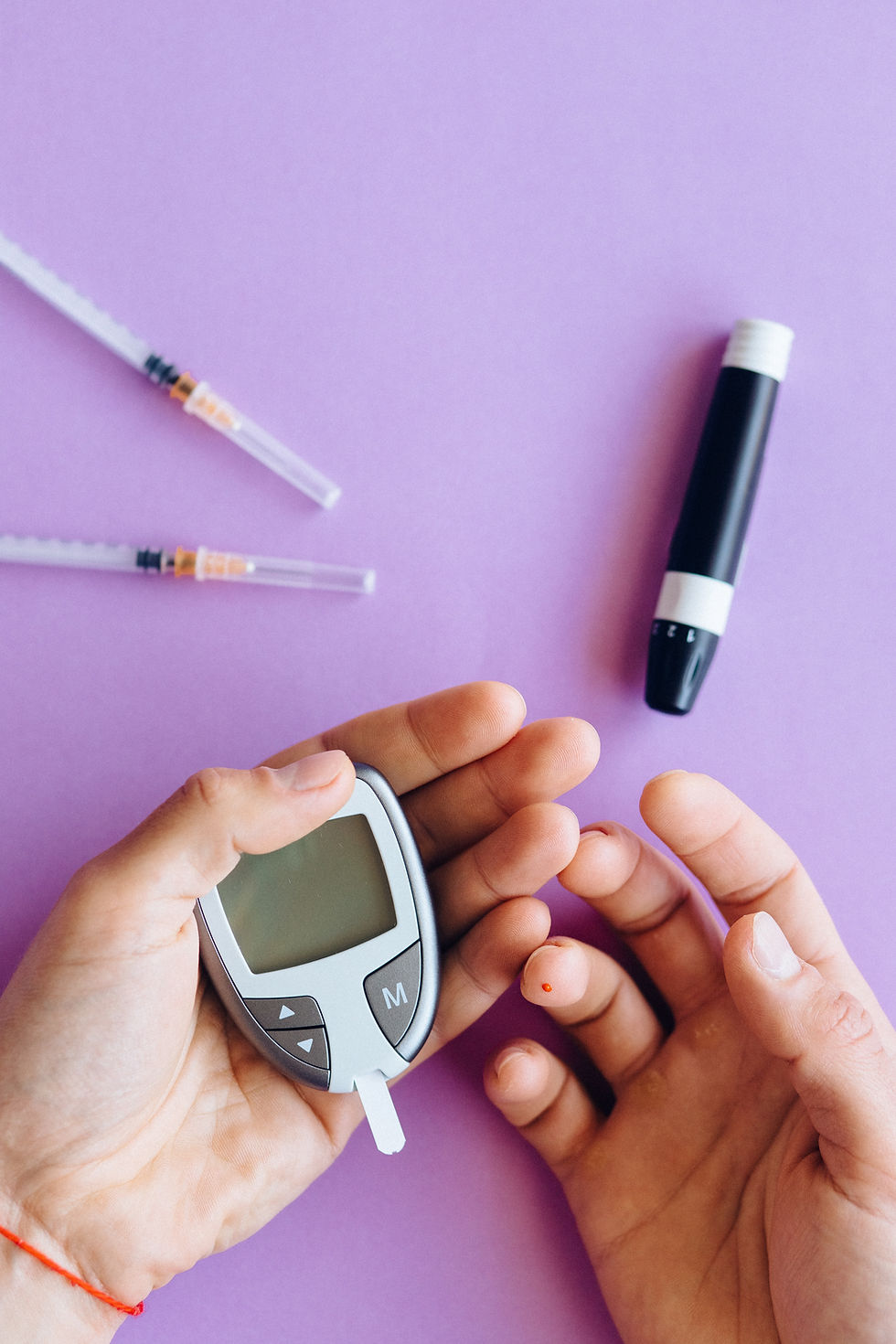What are the hidden costs of finger-prick tests?
- Monica Giudice

- Jun 9, 2021
- 3 min read
Updated: Jun 5, 2023
According to the International Diabetics Federation’s 2021 Diabetes Atlas, 537 million people worldwide have diabetes, with this number expected to increase to 783 million by 2045. [1]
For many of those living with diabetes, the standard method used for monitoring their condition is a finger prick test, in which a lancet is used to extract a drop of blood which is then used to measure glucose levels. With these tests being carried out by individuals multiple times a day, that’s a lot of testing at a considerable cost to economies. So much so that a;
Business Research Company report in 2019 forecast that the worldwide cost of the testing strips alone would amount to just under $13billion in 2021. [2]
Apart from the economic cost, are there any other considerations that we should bear in mind when looking at finger stick tests? Well, let’s start with the obvious one, the pain which accompanies every test. There are several techniques that people can use to lessen the pain, such as using the side of the finger or ensuring that the lancet does not become blunt through overuse. Nevertheless, there is a danger that a desire to avoid pain can lead to a reduction in regular testing. [3] This, in turn, is not surprising and can exacerbate symptoms, requiring additional medical interventions in due course.

Therefore, it is not surprising that Diabetes UK comments that for some, finger prick testing can be a stressful experience. That stress can be exacerbated by the need to undertake testing when outside the confines of the home, perhaps before a meal or in the middle of a busy workday. Not only is there the potential embarrassment of having to test in public, but there may also be a reluctance to reveal a personal health diagnosis to others. Left unchecked, these stresses and anxieties could prevent an individual from carrying out necessary testing or could develop into an ongoing mental health issue.
There is also the chance that the finger prick test may give false results, leading to inappropriate treatments. Temperature, humidity, the location of the test site, or food residue on fingers could all affect readings. In addition, if the lancet draws an insufficient drop of blood, there is a temptation to squeeze the site rather than start again. Squeezing, however, can produce interstitial fluid, which gives a different reading from blood.
Aside from these more obvious drawbacks, there is one other “hidden” cost that we’d like to highlight today: the problem of sustainability.
The production of, at a conservative estimate, some 28 billion test strips, not to mention billions of lancets and wipes, every year is a drain on resources [4]. The safe disposal of these products after use provides another challenge.
Pain, mental health impacts, and sustainability; are three good reasons why as a society, we should investigate alternatives to diabetes finger-prick tests. Diabetes control requires regular monitoring, and a non-invasive test, such as the one we have developed could help people embrace testing without the negative consequences.
[4] Prices for test strips vary across countries and product types. Research indicates an indicative price of $0.5 per strip in the USA, nearer $0.7 in Canada, whilst the indicative cost in the UK is nearer £0.20 ($0.28) per strip. Other countries vary above and below these figures. In our calculations, we have estimated an average price of $0.46 and a total annual cost of $13b, as indicated in the article, which in turn leads to a total of 28 billion strips produced in the year. We appreciate this is a conservative estimate as it equates to far less than one test per day for each suffering from diabetes; indeed, if every person living with diabetes took just one finger prick test every day, that would equate to some 169 billion test strips each year.



Comments